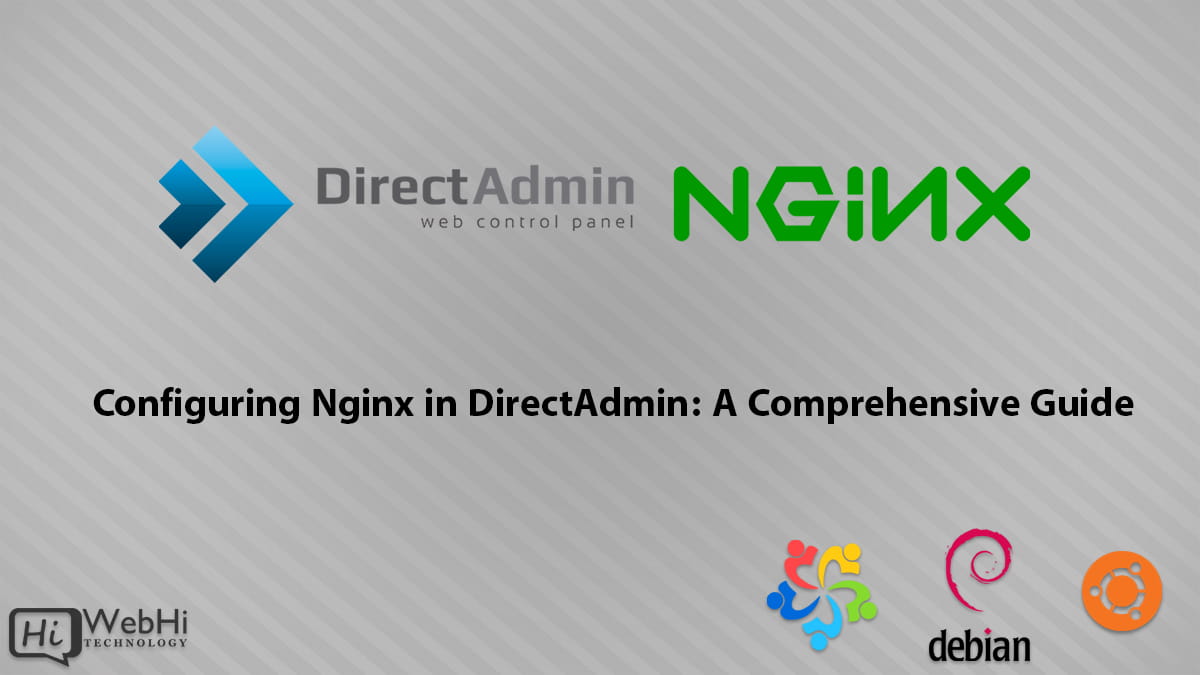
In the world of web hosting, having a reliable and efficient web server is crucial for delivering high-performance websites and applications. Nginx (pronounced “engine-x”) is a powerful open-source web server known for its lightweight architecture, high concurrency, and low resource consumption. While Apache has long been the go-to web server for many hosting providers, Nginx has gained significant popularity in recent years due to its speed and scalability.
If you’re using DirectAdmin, a popular web hosting control panel, configuring Nginx can be a daunting task, especially if you’re new to the platform or unfamiliar with server administration. However, with the right guidance and commands, you can unlock the power of Nginx and enjoy its benefits for your web hosting environment.
In this comprehensive guide, we’ll walk you through the step-by-step process of configuring Nginx in DirectAdmin, using the provided commands as a reference. We’ll cover everything from installing Nginx to configuring it for optimal performance, ensuring your websites and applications run smoothly and efficiently.
Before we dive into the configuration process, let’s briefly discuss the advantages of using Nginx in DirectAdmin.
Benefits of Using Nginx in DirectAdmin:
- High Performance: Nginx is known for its ability to handle a large number of concurrent connections, making it ideal for high-traffic websites and applications.
- Lightweight and Efficient: Nginx has a smaller memory footprint compared to other web servers, which means it can run more efficiently on systems with limited resources.
- Load Balancing: Nginx provides robust load balancing capabilities, allowing you to distribute traffic across multiple servers for improved performance and redundancy.
- Reverse Proxy: Nginx can act as a reverse proxy, caching static content and offloading workload from backend servers, resulting in faster response times.
- Easy Configuration: Nginx’s configuration files are relatively simple and easy to understand, making it easier to customize and manage the web server’s behavior.
Now that you understand the benefits of using Nginx in DirectAdmin, let’s dive into the configuration process.
Step 1: Install Nginx
The first step in configuring Nginx in DirectAdmin is to install the web server itself. DirectAdmin provides a convenient way to install and configure Nginx through its command-line interface.
To install Nginx, follow these steps:
- Log in to your DirectAdmin server using SSH or the built-in terminal.
- Navigate to folder:
$ cd /usr/local/directadmin/custombuild- Run the following command to set Nginx as your web server:
$ ./build set webserver nginxThis command tells DirectAdmin to use Nginx as the primary web server for hosting websites and applications.
- Next, run the following command to set the PHP mode to PHP-FPM (FastCGI Process Manager):
$ ./build set php1_mode php-fpmPHP-FPM is a high-performance alternative to the traditional CGI implementation and is recommended for use with Nginx.
- After setting the web server and PHP mode, you need to update DirectAdmin’s configuration by running the following command:
$ ./build updateThis command ensures that DirectAdmin applies the changes you’ve made so far.
- Finally, run the following command to install Nginx and PHP:
$ ./build nginx
$ ./build php dThe ./build nginx command installs Nginx, while ./build php d installs PHP and sets up the required dependencies.
Conclusion:
Configuring Nginx in DirectAdmin can seem daunting at first, but with the right guidance and commands, it can be a straightforward process. By following the steps outlined in this comprehensive guide, you can unlock the power of Nginx and enjoy its high performance, efficiency, and scalability for your web hosting environment.
Remember, Nginx offers a wealth of configuration options and advanced features, allowing you to tailor it to your specific needs. Whether you’re hosting a simple website or a complex web application, Nginx can provide the performance and reliability you require.
As you continue to explore and configure Nginx, don’t hesitate to consult the official documentation, community forums, and other resources to further enhance your knowledge and troubleshoot any issues that may arise.
